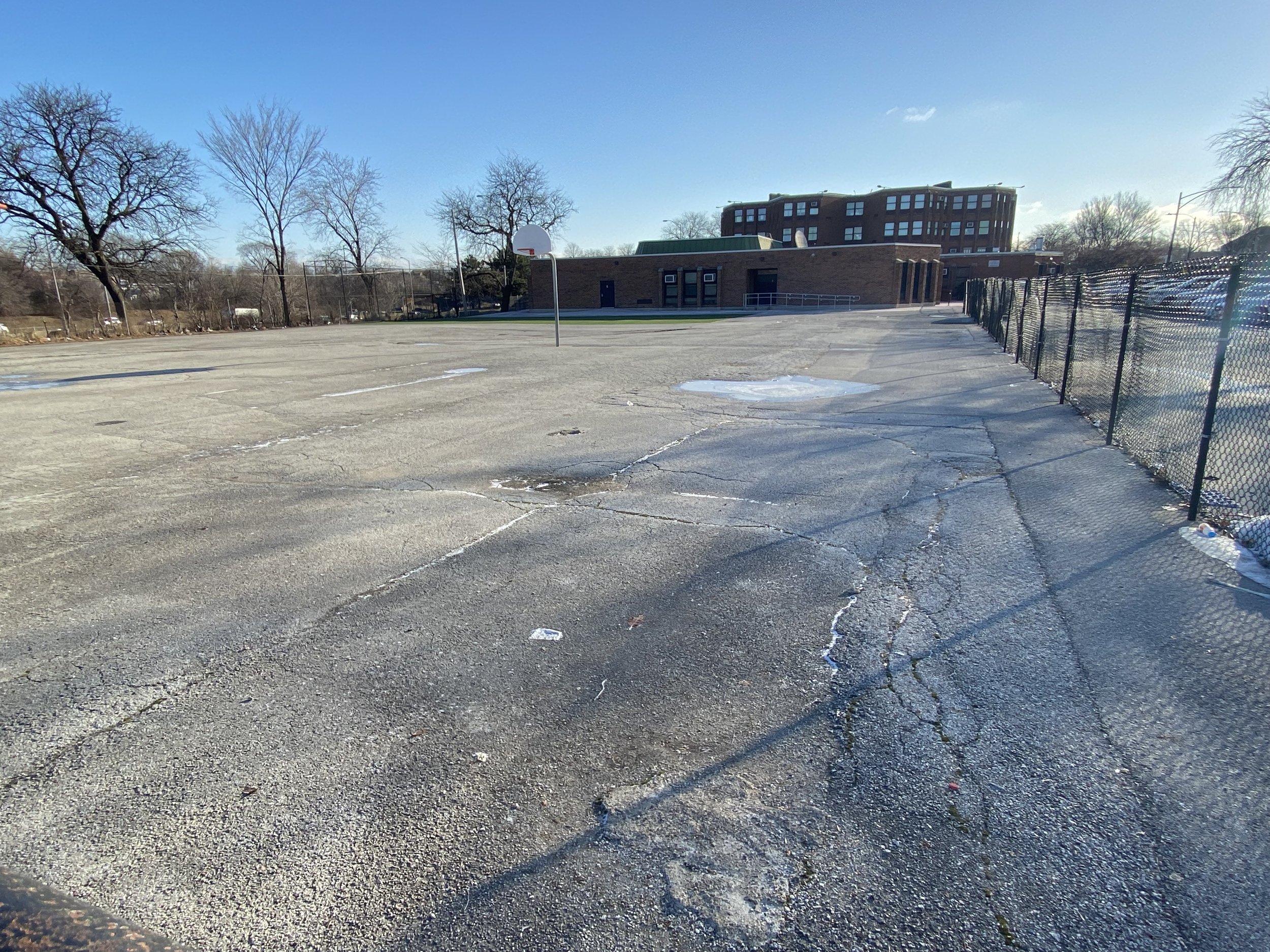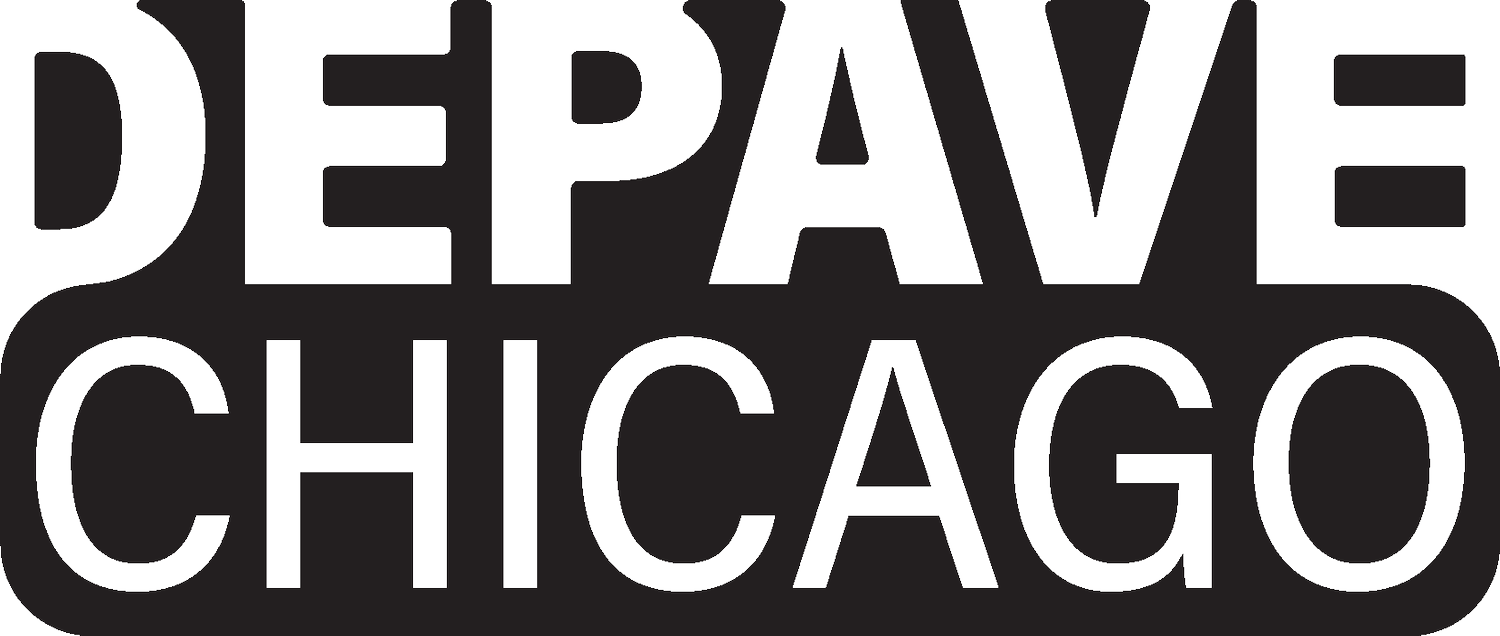
The dirt on Depave Chicago
What, Why and Where to Depave Chicago
What is Depave Chicago?
Depave Chicago is a new initiative to transform paved land to healthy, life-supportive spaces and to do this by working with communities hand-in hand who envision and desire to enact a better future. Depave Chicago emerges from years of research and critical analysis about the impacts of pavement on communities and natural systems—impacts that are both visible and invisible in our air, soil, water, and human bodies. Depave Chicago participates and is learning from a growing movement across the U.S. to shine light on our overlay paved city and to create tools of collaboration to transform paved sites through landscape design.
Removing pavement! Image courtesy of Depave www.depave.org/astor/
As an organization, Depave Chicago hopes to create a sustaining coalition of individuals, organizations, and institutions to work together to address pavement in the city, site by site and across the region. While thinking about the whole system, Depave Chicago works directly with and for communities to meet the needs of that community in place. This means undertaking projects that speak to the unique needs of each site, and over time, to build the physical and social tools needed to scale projects and capacity with more communities over time.
In this spirit, Depave Chicago is collaborative and hands-on. Depaving is an act of care for the earth and community, and everyone can participate in some way. And we need you dear reader! - Either by helping to identify new sites for depaving, by helping to design the new space, by volunteering during depaving and planting days, and/or by contributing financial support or materials.
Depave Chicago is part of a network across the U.S., Canada, United Kingdom, and France, trained by Depave in Portland, Oregon. The Depave Chicago start-up is supported by a Resilient by Nature RxN grant from the Walder Foundation.
Why Depave Chicago?
Over the last century pavement has come to dominate cities so much so that we’ve become numb to its presence. Yet when we concentrate such high percentages of pavement, we pollute waterways through converging stormwater run-off, we create eddies of residential flooding, and we intensify the urban heat island effect. Furthermore, excess pavement leaves cities and communities even more vulnerable in the face of climate change. Concentrations of pavement means less ground surface for gardens, parks, urban forests, and other public natural spaces that are critical for absorbing, shading, buffering, and provisioning.
Pavement map of Chicago and Cook County. 35% of the land cover across the City of Chicago pavement.
Source: Landcover data set 2018, provided by The Morton Arboretum, prepared by The Morton Arboretum, USDA Forest Service, and The University of Vermont
On average, 35% of Chicago’s urban land is paved, and 92% of pavement is asphalt. Some parts of the city including community areas are constituted by even higher percentages of pavement. For example, the community of McKinley Park, where MAT Asphalt operates one of its asphalt production plants, is 46% paved. East Garfield Park is 41%. South Lawndale encompassing Little Village is at 43%. Brighton Park has 46%. These percentages are staggering and speak to a city and communities in peril as we face climate change and increasing heat.
Embracing depaving is a critical step forward to achieving the City’s climate adaptation plan, tree canopy targets, green and complete streets policies, green stormwater infrastructure with volume control targets, and conservation initiatives like “30x30.” A key solution lies in the problem of pavement.
Currently 10% of Chicago is designated as parkland and 20% of Chicago has tree canopy, while climate research suggests that at least 30% of land should be in some form of conserved status. Restoring nature on that scale in Chicago may seem challenging, but it is achievable through site by site change leading to system transformation.
Depaving places like underutilized parking lots, school playgrounds, abandoned vacant land, as well as streets is key to this process. Depave Chicago envisions our cities transformed—creating green where there’s gray—everywhere children play, people breathe, families and friends gather, tree roots nourish soil, rainwater touches earth, and where animals, insects, and birds flourish. Can we imagine and undertake this project together?
Where to Depave Chicago?
Parking lots and paved areas exist in all shapes and sizes throughout the Chicago region. Large paved areas are concentrated around waterways, industrial, and commercial sites, while smaller paved areas exist in school grounds and church parking lots. All of these are important sites for depaving.
Depave projects get started by identifying a good candidate site. Where in your community do you see a better use for an old parking lot? How might taking out part of an existing lot improve your neighborhood environment?
Depave Chicago will work with communities to explore new uses for proposed sites that meet your vision and goals. No site is too small to make an impact. We welcome communities to contact us with proposed project locations.
An example of a paved playground in Chicago. Photo: Mary Pat McGuire








